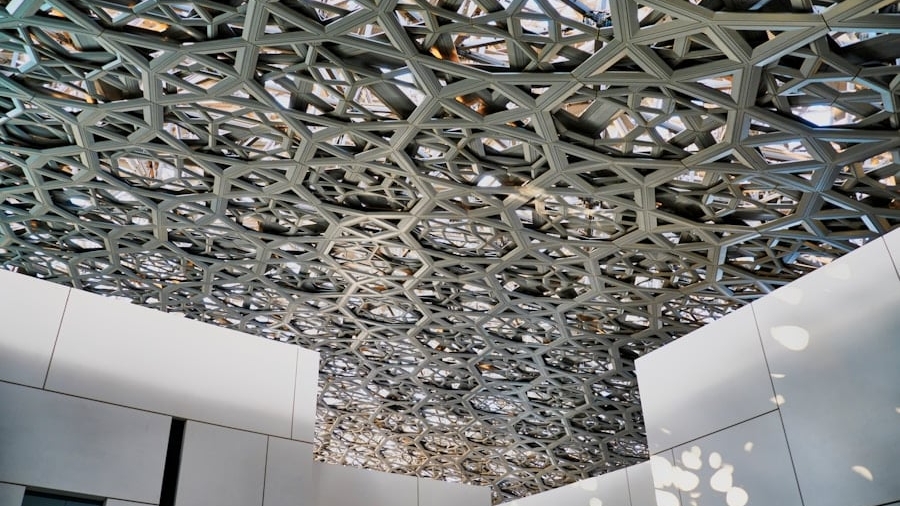Smart materials are a class of materials that possess the ability to respond dynamically to external stimuli, such as temperature, light, moisture, and electric or magnetic fields.
This unique characteristic opens up a plethora of possibilities across various fields, including engineering, medicine, and particularly architecture.
The integration of smart materials into architectural design not only enhances functionality but also promotes sustainability and aesthetic appeal. The concept of smart materials encompasses a wide range of substances, including shape memory alloys, piezoelectric materials, and thermochromic polymers. Shape memory alloys, for instance, can return to a predetermined shape when heated, while piezoelectric materials generate an electric charge in response to mechanical stress.
These materials are increasingly being utilized in innovative architectural applications, leading to the emergence of structures that can adapt to their environment. As architects and engineers continue to explore the potential of smart materials, the boundaries of traditional design are being pushed, paving the way for more responsive and interactive built environments.
Key Takeaways
- Smart materials are materials that can change their properties in response to external stimuli, such as temperature, light, or pressure.
- Smart materials play a crucial role in architecture by enabling the creation of shape-shifting structures that can adapt to different environmental conditions.
- Shape-shifting architecture refers to buildings and structures that can change their shape, size, or functionality to meet the needs of the users or the environment.
- The advantages of shape-shifting architecture include increased flexibility, energy efficiency, and the potential for dynamic and interactive spaces.
- Despite their potential, smart materials in architecture also face challenges and limitations, such as cost, durability, and the need for specialized design and engineering expertise.
The Role of Smart Materials in Architecture
Innovative Solutions for Urban Challenges
The integration of smart materials into architectural design can lead to innovative solutions for urban challenges. In densely populated areas where space is limited, buildings equipped with smart materials can optimize their footprint by changing shape or configuration based on usage patterns.
Flexibility and Environmental Impact
For instance, a building could expand during peak hours to accommodate more occupants and contract during off-peak times to conserve energy. This flexibility allows for more efficient use of resources and can significantly reduce the environmental impact of urban development.
Shape-Shifting Architecture: Definition and Examples

Shape-shifting architecture refers to structures that can change their form or configuration in response to external stimuli or user needs. This concept is rooted in the principles of smart materials and is often realized through the use of advanced technologies such as robotics, sensors, and actuators. The ability to morph not only enhances the functionality of a building but also allows for a more engaging interaction between the structure and its occupants.
One notable example of shape-shifting architecture is the “Dynamic Tower” project proposed by architect David Fisher. This ambitious design features rotating floors that can change orientation independently, allowing residents to enjoy panoramic views at different times of the day. Each floor is equipped with smart technology that enables it to rotate around a central core, creating a constantly evolving skyline.
Another example is the “Living Architecture” project in the UK, which aims to create homes that can adapt their shape based on environmental conditions. These homes utilize smart materials that respond to temperature changes, allowing them to expand or contract as needed for optimal energy efficiency.
Advantages of Shape-Shifting Architecture
The advantages of shape-shifting architecture are manifold, particularly in terms of sustainability and user experience. One significant benefit is the potential for energy efficiency. Buildings that can adapt their form in response to environmental conditions can optimize natural light and ventilation, reducing the need for artificial heating and cooling systems.
For instance, a building that opens up during warm weather to allow for cross-ventilation can significantly lower energy consumption compared to a static structure. Additionally, shape-shifting architecture enhances the overall user experience by providing spaces that can be tailored to specific needs. For example, a conference center designed with movable walls can easily transform from a large auditorium into smaller meeting rooms based on the number of attendees.
This flexibility not only maximizes the utility of the space but also fosters a sense of community by accommodating various activities and gatherings. Furthermore, such adaptability can lead to cost savings over time as buildings can serve multiple functions without requiring extensive renovations or expansions.
Challenges and Limitations of Smart Materials in Architecture
Despite their numerous advantages, the implementation of smart materials in architecture is not without challenges. One significant limitation is the cost associated with these advanced technologies. The initial investment required for smart materials and the systems needed to control them can be prohibitively high for many projects.
This financial barrier often leads architects and developers to prioritize traditional materials over innovative solutions, hindering the widespread adoption of shape-shifting architecture. Another challenge lies in the durability and maintenance of smart materials. Many smart materials are still in the experimental stage, and their long-term performance under varying environmental conditions remains uncertain.
For instance, while thermochromic materials may effectively change color in response to temperature fluctuations, their longevity and resistance to wear over time are critical factors that need thorough evaluation before widespread use in construction. Additionally, integrating these materials into existing building codes and regulations poses another hurdle, as many jurisdictions have yet to establish guidelines for their use.
Future Applications and Innovations

The future of shape-shifting architecture is ripe with potential as advancements in technology continue to evolve. One promising area is the integration of artificial intelligence (AI) with smart materials. By utilizing AI algorithms, buildings could learn from their environment and user behavior over time, optimizing their performance autonomously.
For example, an AI-driven system could analyze occupancy patterns and adjust lighting and temperature settings accordingly, ensuring maximum comfort while minimizing energy consumption. Moreover, advancements in nanotechnology may lead to the development of even more responsive materials that can change properties at a molecular level. Imagine a façade that could alter its thermal properties based on external temperatures or humidity levels without requiring complex mechanical systems.
Such innovations could revolutionize how buildings interact with their environment, making them more resilient to climate change and extreme weather events.
Environmental Impact of Shape-Shifting Architecture
The environmental impact of shape-shifting architecture is a critical consideration as urbanization continues to accelerate globally. By promoting energy efficiency through adaptive design, these structures have the potential to significantly reduce carbon footprints associated with traditional buildings. For instance, buildings that can adjust their form to maximize natural light reduce reliance on artificial lighting during daylight hours, leading to lower energy consumption.
Furthermore, shape-shifting architecture can contribute positively to urban biodiversity by incorporating green roofs or living walls that adapt based on seasonal changes. These features not only enhance aesthetic appeal but also provide habitats for local wildlife while improving air quality in urban areas. As cities grapple with issues such as heat islands and pollution, integrating nature into architectural design through adaptive strategies becomes increasingly vital.
The Future of Shape-Shifting Architecture
As we look toward the future of architecture, shape-shifting designs powered by smart materials represent a transformative shift in how we conceive built environments. The ability for structures to adapt dynamically not only enhances functionality but also aligns with broader goals of sustainability and resilience in an ever-changing world. While challenges remain in terms of cost and material durability, ongoing research and technological advancements promise exciting innovations on the horizon.
The integration of AI and nanotechnology into architectural design will likely pave the way for even more sophisticated applications of smart materials. As architects continue to push boundaries and explore new possibilities, shape-shifting architecture may become a standard rather than an exception in urban landscapes worldwide. Ultimately, this evolution will redefine our relationship with the built environment, fostering spaces that are not only functional but also responsive to human needs and environmental challenges.
If you’re interested in the latest technology trends, you may also enjoy reading about the Huawei Smartwatches Review.
Just like smart materials are transforming architecture, smartwatches are changing the way we interact with technology on a daily basis.
FAQs
What are smart materials?
Smart materials are materials that have properties that can be altered in a controlled manner, such as shape, stiffness, or color, in response to external stimuli such as temperature, light, or electricity.
How are smart materials enabling shape-shifting architecture?
Smart materials are being used in architecture to create structures that can change shape, size, or properties in response to environmental conditions or user input. This allows for dynamic and adaptable buildings that can respond to changing needs and conditions.
What are some examples of smart materials used in shape-shifting architecture?
Examples of smart materials used in shape-shifting architecture include shape memory alloys, which can change shape in response to temperature changes, and electroactive polymers, which can change shape in response to an electric field.
What are the benefits of shape-shifting architecture enabled by smart materials?
Shape-shifting architecture enabled by smart materials can lead to buildings that are more energy efficient, adaptable to different uses, and responsive to changing environmental conditions. This can result in more sustainable and user-friendly structures.
Are there any challenges or limitations to using smart materials in architecture?
Challenges and limitations to using smart materials in architecture include cost, durability, and the need for specialized design and engineering expertise. Additionally, there may be concerns about the long-term performance and maintenance of structures using smart materials.

